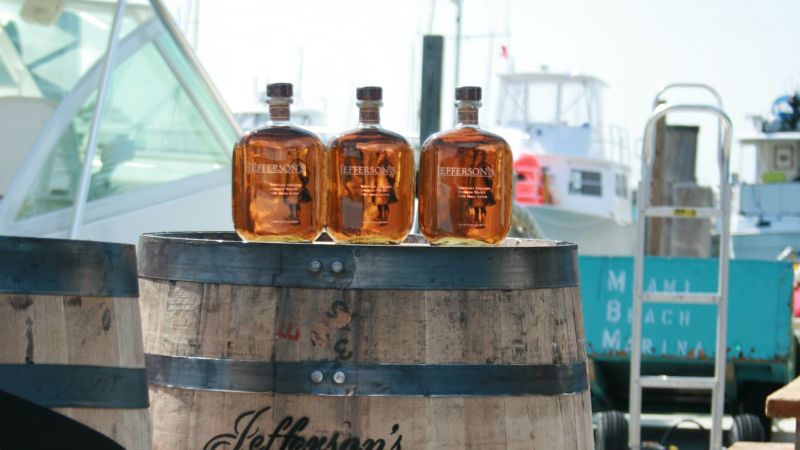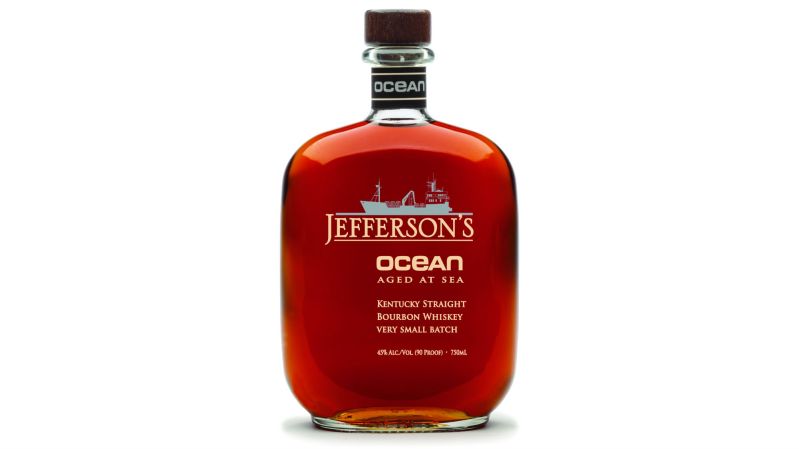
Aging usually means spending time in a new white oak barrel in a barrelhouse somewhere in Kentucky. The only thing that really varies between brands or expressions (besides the juice itself) is how long a particular whiskey stays in a barrel (and, to a lesser extent, whether it is stored on its side or vertically, though there has not been any conclusive proof that it makes much of a difference).
Jefferson’s, a bourbon brand based in Louisville, Kentucky, took aging a step further. One of the company’s expressions is aged at sea. Aptly named Jefferson’s Ocean Aged at Sea, this bourbon, according to Jefferson’s founder Trey Zoeller, was an experiment to see what would happen. His friend, Chris Fischer, worked for OCEARCH, so they loaded three barrels of new-make whiskey on board a boat and, for the next three and a half years, that whiskey traveled the seas while OCEARCH did the badass research that it does.
(For those that don’t know, OCEARCH is known the world over for generating data related to the biology and telemetry of key marine species and engaging in education and conservation outreach. In short, the nonprofit helps teach us about animals like the great white shark while also helping ensure said animals continue to exist in the wild.)

“The first voyage was pretty blind; we did not know what to expect. It was the result of drinking bourbon on the bow of the ship and watching the bourbon sway back and forth in the bottle and the glass, and realizing that the bourbon would slosh around in the barrel as well. I knew it would affect the maturation process, but I had no idea to what extent. It was not until we tapped the barrels three and a half years after we put them on the ship that we saw and tasted to what extent it had changed,” Zoeller says.
When they first tapped the barrels, they found a bourbon that was almost black and thick like molasses. According to Zoeller, the palate was smooth, and there was also a briny characteristic to the whiskey. In order to figure out how the bourbon got to be that way, they sent a barrel back to Jefferson’s cooperage to be reverse-engineered.
“What we discovered was that the sugars in the barrels had been caramelized like nothing they have seen previously. The barrel was porous and breathed in the salt air, and all of the constant contact with the barrel gave the bourbon a very dark color, and the wool acted as a filter straining the stringency,” Zoeller says.
What they’ve learned over time is that there are multiple factors that all effect the bourbon while on the ship. Time, obviously, plays a role, but temperature, ocean air (much like how ocean air effects Islay Scotch whiskies), and motion all contribute to the final product that becomes Jefferson’s Ocean Aged at Sea.
Since the first experiment, Jefferson’s has continued to play with the expression, working to perfect the model however they can. The Aged at Sea you’ll find now is a little different — Jefferson’s takes bourbon that has aged in Kentucky for six to eight years and puts it on a ship for about eight months. In that time, the bourbon reaches thirty ports on five continents while managing to cross the Equator four times.
Basically, Jefferson’s Ocean is better-traveled than most of us. (It also tastes and smells better.) We’re not jealous of it, per se, but we have to say it feels damn good to drink it.
Jefferson’s Ocean Aged at Sea is 45 percent ABV and retails for around $85. If you’re looking for something a wee bit stronger, Jefferson’s Ocean Aged at Sea Cask Strength is 61 percent ABV and retails for around $105.



